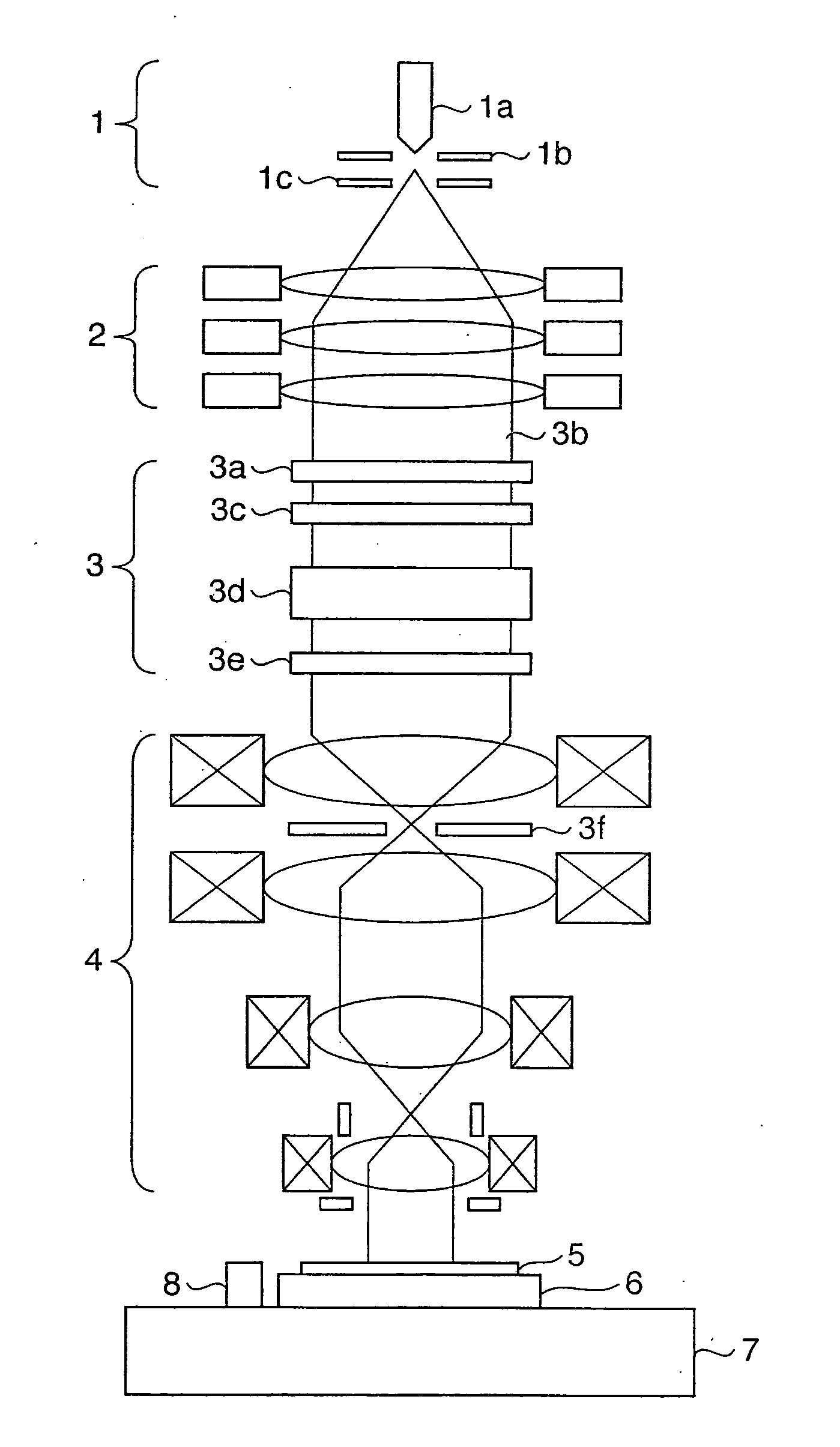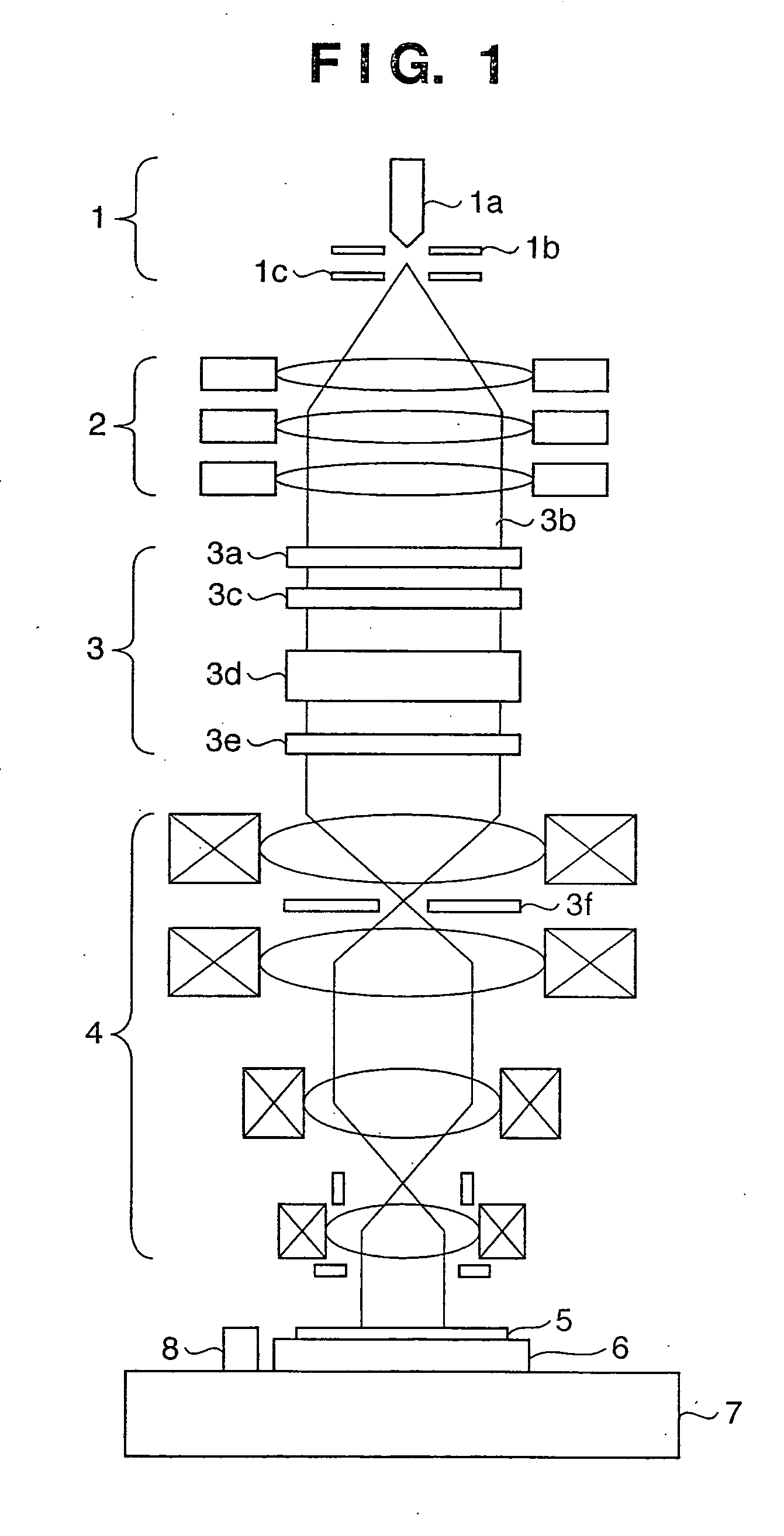Charged-particle beam exposure apparatus and method
- Summary
- Abstract
- Description
- Claims
- Application Information
AI Technical Summary
Benefits of technology
Problems solved by technology
Method used
Image
Examples
first embodiment
[0024]FIG. 1 is an elevation view schematically showing the main part of the multi-electron-beam exposure apparatus according to the present invention. An electron gun 1 includes a cathode 1a, grid 1b, and anode 1c. Electrons emitted by the cathode 1a form a crossover image between the grid 1b and anode 1c. The crossover image will be referred to as an electron source hereinafter.
[0025] An electron beam emitted by the electron source is collimated into an almost parallel electron beam by a collimator lens 2 including a plurality of electrostatic electron lenses. A correction electron optical system 3 is irradiated with almost the parallel electron beam.
[0026] The correction electron optical system 3 comprises an aperture array 3a, a grid array 3c, an element electron optical system 3d, a blanker array 3e, and a stopper array 3f, which are arranged in turn from the electron gun 1 side along the optical axis. The aperture array 3a includes an irradiation current detector 3b.
[0027]F...
second embodiment
[0066] A semiconductor device manufacturing process using the exposure apparatus according to the first embodiment will be described as the second embodiment of the present invention. FIG. 9 is a flowchart showing the flow of the overall semiconductor device manufacturing process. In step 11 (circuit design), a semiconductor device circuit is designed. In step 12 (EB data conversion), exposure control data of the exposure apparatus is created on the basis of the designed circuit pattern.
[0067] In step 13 (wafer formation), a wafer is formed using a material such as silicon. In step 14 (wafer process) called a pre-process, an actual circuit is formed on the wafer by lithography using the wafer and the exposure apparatus which has received the prepared exposure control data. Step 15 (assembly) called a post-process is the step of forming a semiconductor chip by using the wafer formed in step 14. The post-process includes an assembly process (dicing and bonding) and packaging process ...
PUM
 Login to View More
Login to View More Abstract
Description
Claims
Application Information
 Login to View More
Login to View More - R&D
- Intellectual Property
- Life Sciences
- Materials
- Tech Scout
- Unparalleled Data Quality
- Higher Quality Content
- 60% Fewer Hallucinations
Browse by: Latest US Patents, China's latest patents, Technical Efficacy Thesaurus, Application Domain, Technology Topic, Popular Technical Reports.
© 2025 PatSnap. All rights reserved.Legal|Privacy policy|Modern Slavery Act Transparency Statement|Sitemap|About US| Contact US: help@patsnap.com



